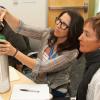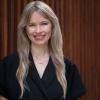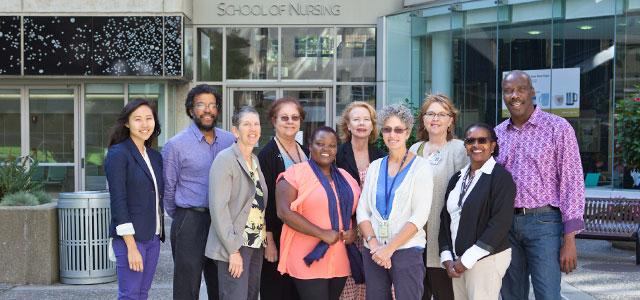
Members of UCSF School of Nursing’s Diversity in Action Committee: Hannah Jang (left), Howard Pinderhughes, Teresa Scherzer, Linda Sawyer, Schola Matovu, Susan Kools, Erica Monasterio, Audrey Lyndon, Linda Gregory, Austin Nation (photo by Elisabeth Fall)
Faculty Diversity Trainings Focus on Humility
A clinical professor of nursing is discussing evidence-based care of a patient who is male, age 64, overweight and sedentary, with high blood pressure and coronary artery disease.
Should the professor mention the patient is also African American? When is this appropriate? Relevant? Offensive?
Confronting such questions is never easy. But in a diverse nation, it’s important that any health sciences school prepare its faculty – and the future clinicians, teachers, and investigators it trains – to be aware of the multifaceted effects of mentioning race, ethnicity, sexual orientation or other human variations in their work, as well as the impacts of omitting or ignoring them. Raising this awareness and creating a comfortable atmosphere for rich, honest reflection of diversity is integral to creating a welcoming campus for people of all backgrounds, say members of UC San Francisco School of Nursing’s Diversity in Action Committee, known as DIVA.
With this goal in mind, the DIVA committee recently unveiled a revamped series of faculty diversity training modules. The trainings, which received strong positive reviews from the first round of faculty learners, are rooted in encouraging the concept of cultural humility: looking inward at personal biases, beliefs and life circumstances as a starting place for truly understanding the experiences of others, including the social, economic and political influences on health.
“I think that many people in educational roles or in roles of power somehow believe they have it all together. What we’ve really tried to normalize is that we all have unconscious biases, and the key to dealing with them is to bring them to the surface so you can understand how they may be operating and how you can do something different,” says faculty member and DIVA co-chair Susan Kools. “We all have a social context we were raised in, a historical time, certain spiritual and religious beliefs, a neighborhood we’ve grown up in – all of these things influence your identity and your experience as teacher, nurse or researcher.”
“In promoting cultural humility, we’re increasing the acknowledgement that we start with ourselves rather than others,” says Erica Monasterio, DIVA’s other co-chair and coordinator of the School’s Family Nurse Practitioner Program.
Responding to Feedback
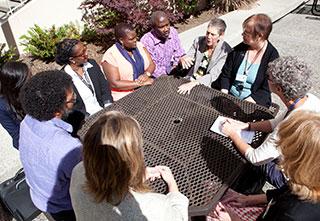 After initially introducing the modules about six years ago, DIVA refreshed the trainings this year largely in response to student feedback, which noted that some classroom guest presenters were disrespectful; the curriculum lacked diversity, and some faculty seemed ill prepared to handle these concerns.
After initially introducing the modules about six years ago, DIVA refreshed the trainings this year largely in response to student feedback, which noted that some classroom guest presenters were disrespectful; the curriculum lacked diversity, and some faculty seemed ill prepared to handle these concerns.
The group built the new modules on the initial versions but incorporated new ideas, especially around the concept of cultural humility and what it means to be a humble teacher when it comes to issues of race, ethnicity and sexuality, says Monasterio.
“Concerns were bubbling up as to whether we were on the cutting edge of handling big-tent diversity,” she says. “This is part of an ongoing evolution, informed by changing thinking and concept development in the fields of cultural humility and cultural competence and teaching these to health professionals.”
Everyone in DIVA agreed the trainings needed an infusion of new energy, so this time around one key element was to more thoroughly involve students, including those expressing concerns.
“I wanted faculty to look at diversity in its broadest spectrum and to feel skilled enough to handle sensitive classroom discussions,” says Linda Gregory, a doctoral student who helped retool the trainings and who also serves as Workforce Outreach and Diversity Coordinator at UCSF Medical Center.
Being part of the training development team was invigorating, hard work – and hopeful, Gregory says. “When you’re part of the solution, you feel you’re being heard. We’re all honestly trying to make a difference here.”
The trainings were designed to help faculty express themselves honestly and openly as a starting place for exploring touchy issues, Gregory says. “To get a refresher on what it really means to be supportive in a culturally diverse environment and how to handle situations where people feel offended – I think the modules really emphasize this.”
The Faculty Training Modules
The four modules, which are mandatory for new faculty and highly encouraged for the School’s core or full-time faculty, are:
- Promoting Cultural Humility in the Classroom
- Inclusive Practices in Teaching
- Integrating Diversity into Courses and Curricula
- Mentoring to Reduce the Diversity Gap
DIVA facilitated the first round of trainings in spring 2013, and 55 of the School’s roughly 150 faculty members took part in sessions that lasted a couple of hours each and combined candid self-exploration with presentations of practical strategies and ideas. Discussions were often emotional.
“People found some content very moving,” Monasterio says.
“The sessions have a level of intensity – it’s something that people have a hard time talking about,” says Kools.
The students involved in shaping the modules attended all but the first one, Promoting Cultural Humility in the Classroom. “That was a decision that they made with faculty support, based on the concern that faculty needed a ‘safe space’ to engage in self-reflection, the focus of that module,” Monasterio says. Students are also involved in the module evaluations and are expected to participate in future trainings, she adds.
Positive Response
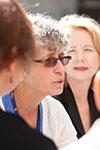 A formal evaluation of the sessions is in the works. Meanwhile, anecdotal reports are heartening, Monasterio says. “The level of participation we’ve had and the spontaneous feedback was extremely positive. People felt challenged. People felt they were learning new things.”
A formal evaluation of the sessions is in the works. Meanwhile, anecdotal reports are heartening, Monasterio says. “The level of participation we’ve had and the spontaneous feedback was extremely positive. People felt challenged. People felt they were learning new things.”
She says this positive response is trickling into classrooms and hallways via casual comments – even from those who weren’t directly involved in the modules or haven’t taken them. “This is most gratifying to me. People are feeling the School is putting their money where their mouth is.”
Maureen McGrath, a new associate clinical professor who took all of the modules, says, “They were some of the best faculty trainings I’ve had in a long time. They also fit with my basic philosophy, but it was very nice to have tools for my teaching.”
McGrath is putting the lessons in practice in several ways, including asking guest lecturers to present their statistics in multidimensional ways – to not just focus on race. And when presenting a case study, she’s asking guest lecturers to leave race out unless it’s clearly relevant.
“We have to look at health from all dimensions. Diabetes is an illness that’s more prevalent in Latinos, but is it socially driven? Are there social determinants for this illness?” McGrath asks. “As a teacher, I don’t want to give information that leaves things unsaid, such as economic indicators of disease. If we break down the statistics by demographics, income level and education…diabetes may be more closely tied to poverty than race.”
Genetic factors linking race to health are important, but explorations of diagnosis and treatment must go deeper and broader, McGrath adds. “We have to dissect the information with a better lens.”
Diversity Improves Health Care
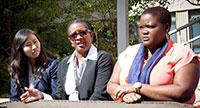 One of the strongest motivations for DIVA’s work is to help build a health care system that’s responsive to real demographics. “There’s good solid data that shows people get better care when they have something in common with the people caring for them. When you look at that data, it really speaks volumes as to who we should be educating,” says Kools.
One of the strongest motivations for DIVA’s work is to help build a health care system that’s responsive to real demographics. “There’s good solid data that shows people get better care when they have something in common with the people caring for them. When you look at that data, it really speaks volumes as to who we should be educating,” says Kools.
The faculty trainings are an important piece of this bigger picture, she says, since recruitment and retention of a diverse student body hinges on a welcoming learning environment. This is even more important when faculty don’t represent the diversity of the country’s demographics, as is the case at UCSF, even as it actively tries to change this, Gregory says.
“Because there is a relative absence of minority faculty, it’s important for students of color and other diverse backgrounds to feel they’re accepted into the scientific community,” she says. “This is an acculturation process. We want an administrative commitment to an inclusive environment, to developing us as nurse scientists…where even though you may not see yourself in the faculty, you see representatives of yourself in the artwork, in the programs, in the syllabus, and you see research opportunities.”
She also notes that this level of commitment is an ongoing process. Discussions are in the works about offering the modules to all faculty annually, as well as to other UCSF schools.
“This is not an end point,” Monasterio says. “Finding ways to struggle with these issues and to move forward is really important. It’s not just this lofty liberal goal; it has bread-and-butter impact on the care that people receive.”


